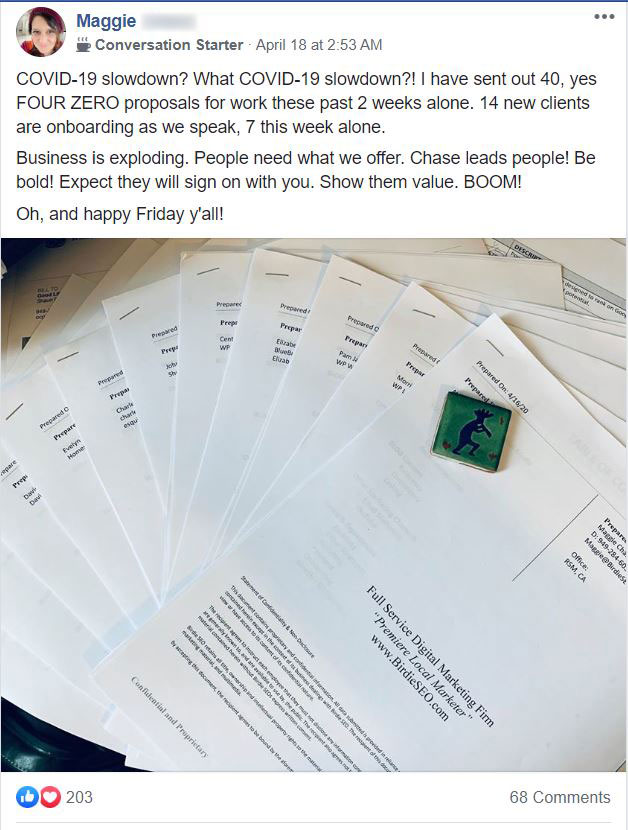
A copywriter creates written copy for advertising and marketing materials to promote brands and encourage consumer engagement. Their work helps businesses communicate with their target audiences. Copywriters contribute to marketing efforts by collaborating with creative teams and marketing managers to develop campaigns that convey a brand's message. They make sure that all copy is contextually appropriate for different platforms from print to digital. Part of a copywriter’s job is to adapt their writing style to meet the brand tone of voice.

Copywriters also play an important role in sales by influencing buying decisions. Jeremy Weber from Newark, Delaware, US and copywriter at The Johnson Group shares that a copywriter persuades people to take a real action in the world using only their words. He explains that other types of writers can also create promotional materials. However, only copywriters know how to get customers to buy a product, click a link, or sign up for a newsletter.

A copywriter works in-house as part of a company or as a freelancer who communicates directly with the client. Alex Cattoni, a copywriter and the founder of The Copy Posse, shares that her biggest milestone was billing a single client for over $40,000 in one month. She wrote newsletters, affiliate emails, internal marketing campaigns, and sales pages. This resulted from building skills, long-term client relationships, and delivering high-value strategic services.
In this article, I’ll show you 15 examples of what copywriters do plus I’ll give you 3 tips to land a job as a copywriter. And at the end, I’ll show you a different and more lucrative business model than copywriting.
15 Examples of What Copywriters Do
1. Ad Copy Creation
Ad copy creation is crafting compelling advertisements tailored for various media platforms to effectively promote products or services. This could include print ads, online ads, television commercials, or radio spots. The goal of ad copy is to attract attention and build interest. You could the target audience to make a purchase or click a link.
Copywriters who write ads highlight the benefits of the product, showing how it solves problems or improves life. You can do A/B testing where you expose two variants (A and B) to similar audiences at the same time. Then, you measure the effectiveness of each based on specific metrics like click-through rates, conversion rates, or other KPIs.
2. Website Content Development
Website content development is the process of writing engaging and informative content that fills various sections of a website. Effective website content serves to inform, engage, and convert visitors. Copywriters provide valuable information and clear calls to action to the reader.
Copywriters make sure that all website copy, from landing pages to marketing materials, is clear, compelling, and properly aligned with SEO best practices. Consistency in tone across all pages strengthens the brand's message and encourages visitor engagement.
An effective piece of website copy could be an About Us page that narrates the company's history. You can highlight their commitment to customer satisfaction in a way that connects emotionally with potential clients.
3. Commercial Scriptwriting
Commercial scriptwriting involves creating scripts for radio or TV commercials that capture attention and communicate key messages. This form of copywriting aims to produce clear, concise, and compelling narratives. You want to resonate with the audience to drive both interest and action.
To excel in commercial scriptwriting, focus on creating memorable, catchy content that sticks with the viewer. You can incorporate humor, emotion, or storytelling. An example is a TV car commercial targeting families. Here, you can develop a script that highlights the vehicle's safety features and family-friendly design. Use emotional appeal to connect with parents' desire to protect their children. This can be through a narrative that showcases a family enjoying a safe and comfortable road trip.
4. Social Media Content Production
Social media content production is about creating posts that engage followers while conveying a brand's message. This type of copywriting is geared towards generating conversations and building community around a brand on platforms like Facebook, Instagram, and Twitter.
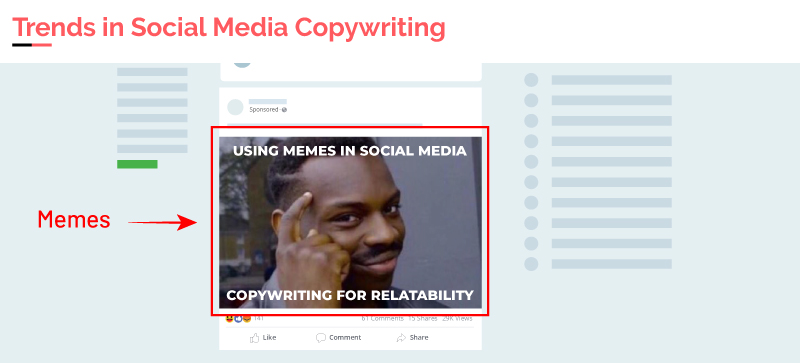
Trends in social media copywriting include using memes for relatability. You can also use polls and questions for direct engagement. Use a mix of content types, including images, videos, and stories, to catch viewer interest. Monitor engagement metrics to understand what resonates with the audience. A clear narrative design maintains a consistent brand messaging across all social platforms.
5. E-commerce Product Descriptions
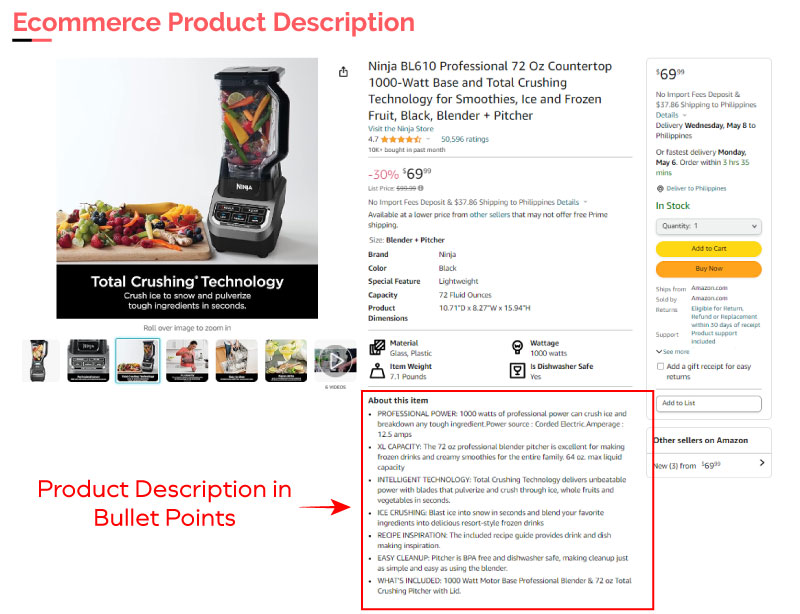
Ecommerce product descriptions involve writing detailed and persuasive copy that highlight the features and benefits of products. These descriptions inform and entice the reader to buy the product online. The best practices for ecommerce copywriting are to focus on clarity and conciseness. Put the most important information at the top and use bullet points to show product features and benefits.
Ecommerce copywriters know how to highlight the product’s unique selling points to distinguish it from competitors. They use persuasive but not hyperbolic language to build trust from customers. For some online stores, copywriters will include keywords to improve SEO and a call-to-action (CTA) to guide customers toward making a purchase.
6. SEO Blog Writing

SEO blog writing is about crafting blog posts that are optimized for search engines to increase a website’s visibility and traffic. This form of writing uses relevant keywords into engaging, informative content that also appeal to human readers.
To excel in SEO blog writing, focus on creating content that addresses the interests of your audience while incorporating SEO practices. Use relevant keywords throughout the article. Structure your posts with clear headings for better readability and ranking results.
7. Email Marketing Campaigns
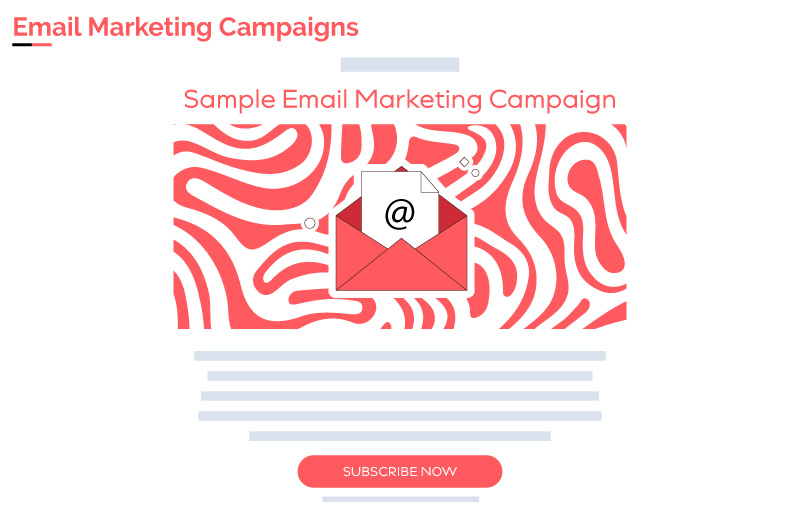
Email marketing campaigns are crafting targeted email messages designed to promote products, events, or updates to an engaged subscriber list. To excel in email copywriting, use a clear, compelling subject line to increase open rates. Ensure your email content provides real value to the reader. Dividing your email list can also help by targeting specific groups with tailored messages.
8. Press Release Drafting

Press release drafting is about creating official announcements that publicize significant company milestones, product launches, or events. These documents are essential for informing the media and the public about important updates.
You can practice public relations writing by startng with a strong headline that captures attention. Follow it with a concise opening paragraph summarizing the key message. Make sure the content answers the who, what, when, where, and why to provide complete information to journalists and readers. Including a company boilerplate also helps.
9. White Papers and Case Studies
White papers and case studies involve creating in-depth, authoritative documents that analyze problems and their solutions. These are used to inform and persuade stakeholders by providing detailed insights and data-driven results.
To excel in writing white papers and case studies, ensure your documents are well-structured, with a logical flow from problem identification to solution and results. Use credible sources and real-world examples to support your claims and conclusions.
10. Technical Documentation
Technical documentation is writing detailed manuals and guides that explain how to use complex products or software. The goal is to make technical information accessible and easy to understand for all users.
Technical copywriters use simple language and well-organized sections. You can include visual aids like diagrams or screenshots. For example, creating a user guide for a complex software tool could involve breaking down its functions into manageable, step-by-step instructions. Start with basic setup processes, followed by detailed explanations of more advanced features. Add practical examples to show how certain tasks are performed within the software.
11. Pitch Decks and Business Proposals
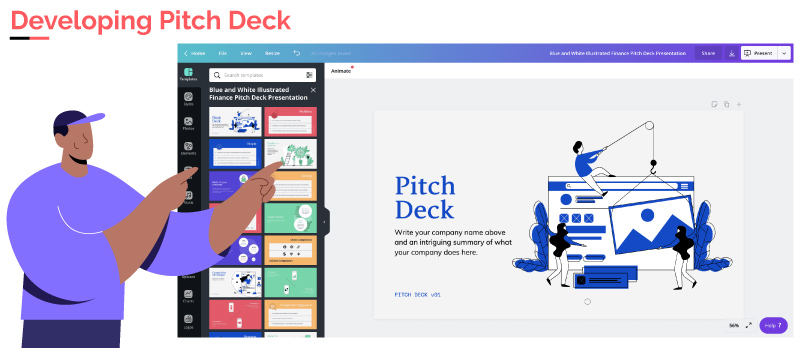
Developing pitch decks and business proposals involves creating presentations that persuade investors or clients to engage with a business. These documents showcase a company's value proposition, market potential, and the benefits of investing in or working with the company.
Copywriters who write pitch decks and business proposals highlight key data points like market analysis, business model, and expected ROI. They also use visually engaging elements to reinforce key points and keep the audience engaged.
12. Content Strategy Formulation
Content strategy formulation involves planning and defining a cohesive content approach that aligns with a brand’s overall marketing goals. This ensures that all content supports the brand's objectives and resonate with the intended audience.
The difference between content writing and copywriting is that content writing is broader. It involves creating informative and engaging content intended to educate, entertain, and engage audiences over a longer term. Copywriting focuses on creating persuasive content to prompt immediate action.
Copywriters involved in content strategy develop a content calendar that addresses different customer needs and lifecycle stages. They mix different content types, like educational articles, engaging visuals, and interactive media. Planning a content calendar ahead of time keeps things organized, especially if the company prefers cross-platform content integration.
13. Newsletter Composition
Newsletter composition is about crafting newsletters that keep subscribers informed and engaged with the brand through curated content. This continuous engagement helps maintain a strong connection with an audience.
Each newsletter contains content that is directly beneficial to the readers. This can include updates, insights, and offers that align with their interests. Use an attractive layout, compelling headlines, and clear CTA to increase reader engagement and click-through rates.
14. Tagline and Slogan Creation
Tagline and slogan creation is crafting concise, memorable phrases that captures a brand’s identity and core message. These help make a lasting impression on the audience and differentiates the brand.
A copywriter uses short, powerful words that convey the brand’s benefits and personality. They experiment with different formulations to capture the brand message while creating an emotional connection with consumers.
15. Editorial Article Writing
Editorial article writing entails creating content for magazines or online platforms that aims to inform, entertain, and engage the audience. This covers a range of topics and often incorporates a mix of journalism and storytelling to appeal to a wide readership.
To excel in editorial writing, use a strong narrative flow. Ensure factual accuracy and incorporate quotes and data so your articles are more credible. Engaging and well-researched articles can establish you as a trustworthy voice in the industry. Most copywriters also use an editorial calendar set by the company or they organized themselves to keep track of relevant topics.
3 Tips For Landing a Copywriting Job

1. Build a Strong Copywriting Portfolio
Start by selecting a variety of works that showcase your copywriting skills. This could be across different formats such as blogs, ads, and email campaigns. Include pieces where you helped a company with increasing their sales or improving their engagement rates. Digital portfolios are advantageous because they are shareable and can be updated regularly.
If you don’t know where to start with your portfolio, you can look into what types of copywriting companies are looking for. According to alex1596 on Reddit, this is called the “crystal ball technique.” This method anticipates the company’s need for content such as sales letters or product descriptions. If they’re looking for a landing page, write one and pitch it to them. You can build a body of relevant work and present it to other clients as soon as the opportunity arises.

2. Connect With Businesses Who Need Copywriters
Start by identifying businesses who need copywriters, such advertising agencies, local services, and e-commerce retailers. Explore different industry forums and company websites to find businesses actively looking for copywriting services. You can also use LinkedIn to research and connect with marketing directors or content managers.
Attending industry conferences and local business events can also provide opportunities for face-to-face networking. It’s important to follow up on leads with professional persistence. Send messages that remind potential clients of your previous interaction and the value you offer.
Reddit user yespsycho said they landed their first and current job as an in-house copywriter through networking. They also mention that this method may not be typical. It relies heavily on personal connections and specific opportunities that arise from them, which not all aspiring copywriters may have access to.

3. Learn Copywriting Formulas and Psychology
Mastering copywriting formulas such as AIDA (Attention, Interest, Desire, Action) and PAS (Problem, Agitate, Solve) is important for creating persuasive writing that engages and converts audiences. These formulas help structure your content to capture attention and prompt action.
To stay relevant in the field, update your knowledge through online courses, webinars, and by following industry leaders and trends in copywriting. Practicing these techniques will sharpen your skills and increase your marketability as a copywriter.
What Are The Daily Tasks That Copywriters Do?
Researching, writing, and editing are the daily tasks copywriters do. Their day often starts with researching topics and keywords to ensure the content aligns with target audience interests and SEO goals. Writing tasks can include creating promotional materials, blog posts, or social media content. Editing ensures that the content is clear, grammatically correct, and adheres to brand voice. Time management helps copywriters balance multiple projects and meet various deadlines.
According to Van Vizovisek, a direct response copywriter from Ljubljana, Slovenia, the daily tasks that copywriters should do are reading and analyzing 1 sales page. They should also write 500 words of copy and come up with 1 big idea that readers can find valuable. Copywriters who follow these practices stay sharp and creative. They hone their skills and discipline, while learning more effective sales strategies and market trends.
Van
@vizovisek
Tasks that every copywriter should do daily:
1. Read & analyze one sales page
2. Write 500 words of copy
3. Come up with one big idea or unique mechanism
The entry price.
7:33 AM · Oct 24, 2021
How to Become a Copywriter That Does Freelance Work?
To become a freelance copywriter, start by establishing a legal business entity to ensure professionalism and compliance. Next, create a professional website to showcase your portfolio and services. Develop a rate card to clarify your pricing structure. Building a personal brand is important. Leverage content marketing and social media to attract clients. You can be a copywriter without experience by taking on small projects, volunteering, or contributing to blogs and online platforms to build your portfolio and gain social proof.
George Ten, founder of Copy Thinker and Grammar Hippy, shares that you can start copywriting by reading books, analyzing successful ads, and writing ads for any products you find. These can help you practice your copywriting skills. George recommends doing cold outreach on Twitter or pitching your services on Upwork to find clients.
George Ten
@GrammarHippy
How to start your copywriting journey the right way
1. Read 3 books.
2. Analyze 5-10 successful ads/day.
3. Write 5 ads per day for any products you can find.
4. Use the ads you’ve written to build a portfolio.
5. Start looking for clients.
Upwork / cold outreach / Twitter.
11:09 PM · Sep 14, 2022
What Can You Do To Make Money Online Aside from Copywriting?
You can do local lead generation to make money online aside from copywriting. This model surpasses copywriting as it doesn't rely solely on crafting persuasive content but on generating valuable leads for businesses. Where copywriting demands a constant flow of creative output and the pressure of meeting diverse client expectations, local lead generation focuses on creating connections between businesses and potential customers, sidestepping the saturated competition for attention online.
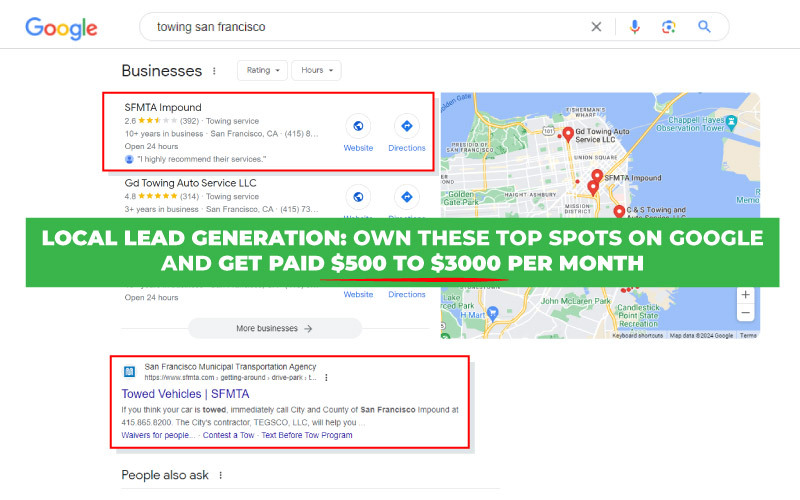
The local lead generation model works by targeting specific local searches and directing potential customers to businesses that can serve their needs. It’s about ranking websites high in search engines for local keywords, drawing in an audience actively seeking services, and delivering those leads to businesses ready to convert them into sales. The earning potential in local lead generation is significant, with successful sites potentially earning $500 to $2,000 each month from businesses eager for leads.
Local lead generation provides a service that's in high demand—connecting customers to businesses. It allows for a more streamlined business model that can be highly rewarding without the complexities of copywriting. This makes it a practical and lucrative option for those looking to establish a steady online income stream.




